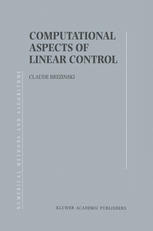

Most ebook files are in PDF format, so you can easily read them using various software such as Foxit Reader or directly on the Google Chrome browser.
Some ebook files are released by publishers in other formats such as .awz, .mobi, .epub, .fb2, etc. You may need to install specific software to read these formats on mobile/PC, such as Calibre.
Please read the tutorial at this link: https://ebookbell.com/faq
We offer FREE conversion to the popular formats you request; however, this may take some time. Therefore, right after payment, please email us, and we will try to provide the service as quickly as possible.
For some exceptional file formats or broken links (if any), please refrain from opening any disputes. Instead, email us first, and we will try to assist within a maximum of 6 hours.
EbookBell Team

4.3
18 reviewsMany devices (we say dynamical systems or simply systems) behave like black boxes: they receive an input, this input is transformed following some laws (usually a differential equation) and an output is observed. The problem is to regulate the input in order to control the output, that is for obtaining a desired output. Such a mechanism, where the input is modified according to the output measured, is called feedback. The study and design of such automatic processes is called control theory. As we will see, the term system embraces any device and control theory has a wide variety of applications in the real world. Control theory is an interdisci plinary domain at the junction of differential and difference equations, system theory and statistics. Moreover, the solution of a control problem involves many topics of numerical analysis and leads to many interesting computational problems: linear algebra (QR, SVD, projections, Schur complement, structured matrices, localization of eigenvalues, computation of the rank, Jordan normal form, Sylvester and other equations, systems of linear equations, regulariza tion, etc), root localization for polynomials, inversion of the Laplace transform, computation of the matrix exponential, approximation theory (orthogonal poly nomials, Pad6 approximation, continued fractions and linear fractional transfor mations), optimization, least squares, dynamic programming, etc. So, control theory is also a. good excuse for presenting various (sometimes unrelated) issues of numerical analysis and the procedures for their solution. This book is not a book on control.